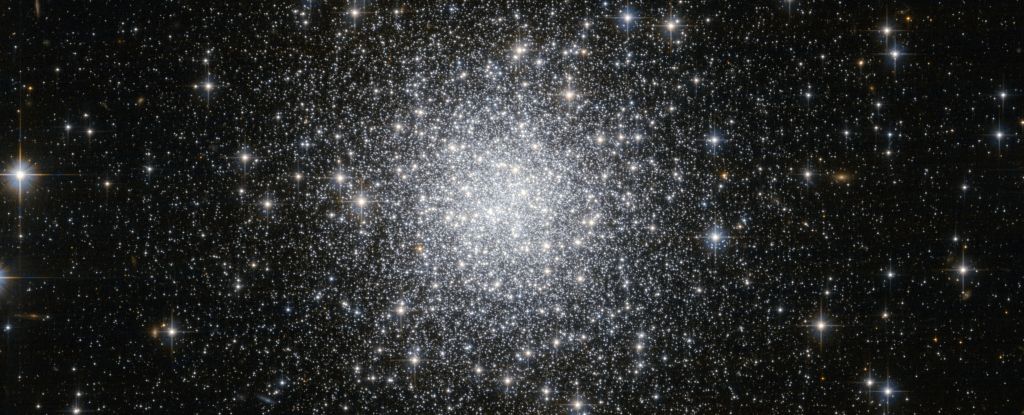Astrophysicists have long been intrigued by the nature of the first stars in the universe, which have left only traces of their presence. However, evidence traced in images from the James Webb Space Telescope now suggests that after the appearance of the first stars, there were fusion-powered balls of heat and fury, known as “chonker” stars, which were absolute colossi, with masses up to 10,000 Suns. This recent idea is gaining traction and is supported by new evidence that has been discovered by researchers.
Research Findings
The research team, led by astrophysicist Corinne Charbonnel of the University of Geneva in Switzerland, has found a new line of evidence that supports the existence of these chonker stars. The team has discovered that a type of star group called a globular cluster holds the key to understanding the nature of these stars. These clusters contain between 100,000 and 1 million stars and are very dense and spherical, which suggests that all the stars were born around the same time from the same cloud of gas. These clusters are considered “fossils” of the early universe, and their study can help us understand the chemistry of eons past.
One of the peculiarities of these older globular clusters is that they exhibit chemical abundance ratios that vary from star to star and are difficult to explain. An enrichment of helium, nitrogen, and sodium, and a relative depletion of carbon and oxygen, suggest that hydrogen burning at extremely high temperatures is the only explanation. In 2013, researchers suggested that one possible way of attaining those high temperatures is in the cores of massive stars, which were supermassive, even at around 10,000 solar masses, with cores much hotter and at much higher pressures than those of the stars we see around us today.
The research team then determined in 2018 that the stellar wind emitted by these supermassive stars “polluted” the interstellar medium of globular clusters with these elements. Meanwhile, ongoing collisions with smaller stars replenished the star’s mass. Any stars born of the polluted interstellar material would inherit the chemical abundances seeded by the supermassive stars in the early universe.
The team needed more observational evidence, and they obtained it with the help of the James Webb Space Telescope, which analyzed the spectrum of light sent to us across space and time from a galaxy called GN-z11, lurking at just 440 million years after the Big Bang. The data that came in showed that the interstellar medium of GN-z11 is substantially enriched in nitrogen compared to oxygen, with an abundance ratio that’s more than four times that of the Sun.
Charbonnel and her colleagues conducted a thorough analysis and modeling, and found that giant stars between around 1,000 and 10,000 solar masses that formed through runaway collisions of smaller objects can consistently explain the abundance ratios, not just in globular clusters, but in GN-z11 as well. The strong presence of nitrogen can only be explained by the combustion of hydrogen at extremely high temperatures, which only the core of supermassive stars can reach, as shown by the models of Laura Ramirez-Galeano, a Master’s student in their team.
Conclusion
The evidence is far from conclusive, but it does provide astrophysicists with a direction for further exploration. The researchers hope to obtain more data on early galaxies from the James Webb Space Telescope, looking for similar clues that could help us identify these early chonker stars. This discovery could help resolve other mysteries, like how supermassive black holes formed in the early universe and what the first stars in the universe were like. If the supermassive star scenario can be confirmed, it would provide an important step in our understanding of globular clusters and for the formation of supermassive stars in general. The research calls for further studies to understand the physical processes taking place in such extreme objects in the early universe and their possible connection with the formation of globulars, supermassive stars, and potentially supermassive black holes, among others.



Leave a Reply